All science stories
Showing results 1 to 10
24
-
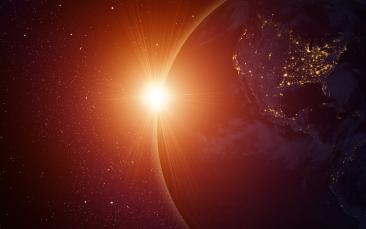
Discovering the origin of our Sun
The Sun is a star that formed 4.6 billion years ago in our Milky Way Galaxy. It is the largest and most massive object in our Solar System, whose energy enables life on our planet. What happened at the time of its birth? Was its formation similar to…The Sun is a star that formed 4.6 billion years ago in our Milky Way Galaxy. It is the largest and most massive object in our Solar System, whose energy enables life on our planet…The Sun is a star that formed 4.6 billion years ago in our Milky Way Galaxy. It is the largest and most massive object in our Solar System, whose…The Sun is a star that formed 4.6 billion years ago in our Milky Way Galaxy. It is the largest and most massive object in our Solar System, whose energy enables life on our…The Sun is a star that formed 4.6 billion years ago in our Milky Way Galaxy. It is the largest and most massive object in… -
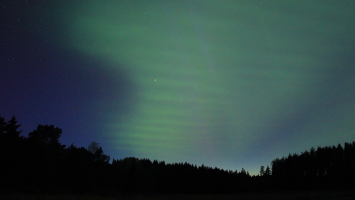
The night sky from your window
Cancelled flights, and less commercial and industrial activity during lockdown are reducing air and light pollution around the world, leading to spectacular views of the night sky. To mark this year’s International Dark Sky Week, we bring you the…Cancelled flights, and less commercial and industrial activity during lockdown are reducing air and light pollution around the world, leading to spectacular views of the night sky. To…Cancelled flights, and less commercial and industrial activity during lockdown are reducing air and light pollution around the world, leading to…Cancelled flights, and less commercial and industrial activity during lockdown are reducing air and light pollution around the world, leading to spectacular views of the…Cancelled flights, and less commercial and industrial activity during lockdown are reducing air and light pollution around… -
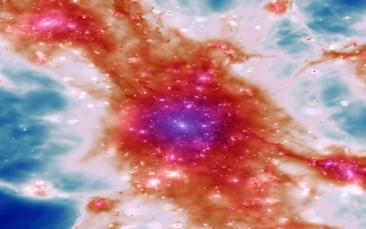
The cosmic threat that binds our universe
There is a web of filaments – essentially long strands of gas – that connects all the galaxies in the universe. This is known as the Cosmic Web and, so far, astrophysicist had only a partial idea of what it may have looked like. Now, ERC funded…There is a web of filaments – essentially long strands of gas – that connects all the galaxies in the universe. This is known as the Cosmic Web and, so far, astrophysicist had only a…There is a web of filaments – essentially long strands of gas – that connects all the galaxies in the universe. This is known as the Cosmic Web and,…There is a web of filaments – essentially long strands of gas – that connects all the galaxies in the universe. This is known as the Cosmic Web and, so far, astrophysicist…There is a web of filaments – essentially long strands of gas – that connects all the galaxies in the universe. This is… -
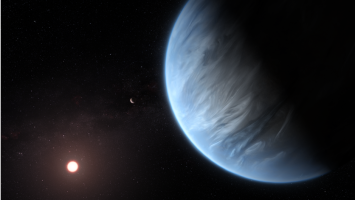
First water detected on potentially habitable planet
Water vapour has been detected in the atmosphere of a remote planet with habitable temperatures. Two ERC grantees at the University College London (UCL) were among the coauthors of study.Water vapour has been detected in the atmosphere of a remote planet with habitable temperatures. Two ERC grantees at the University College London (UCL) were among the coauthors of…Water vapour has been detected in the atmosphere of a remote planet with habitable temperatures. Two ERC grantees at the University College London …Water vapour has been detected in the atmosphere of a remote planet with habitable temperatures. Two ERC grantees at the University College London (UCL) were among the…Water vapour has been detected in the atmosphere of a remote planet with habitable temperatures. Two ERC grantees at the… -
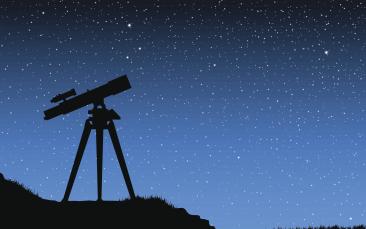
Lost and found in the largest structures of the universe
On a clear summer night, look up to the sky and what do you see? Ordinary matter such as planets, stars maybe even an asteroid. Millions of little specks, as far as the eyes can reach. This ordinary matter, also known as baryonic matter, is the…On a clear summer night, look up to the sky and what do you see? Ordinary matter such as planets, stars maybe even an asteroid. Millions of little specks, as far as the eyes can reach…On a clear summer night, look up to the sky and what do you see? Ordinary matter such as planets, stars maybe even an asteroid. Millions of little…On a clear summer night, look up to the sky and what do you see? Ordinary matter such as planets, stars maybe even an asteroid. Millions of little specks, as far as the eyes…On a clear summer night, look up to the sky and what do you see? Ordinary matter such as planets, stars maybe even an… -
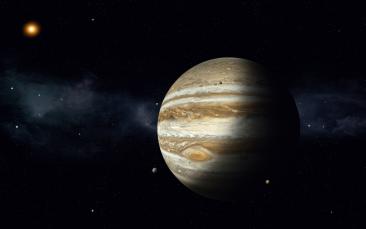
Jupiter was a late bloomer
With a diameter of around 143,000 kilometres and a mass 300 times that of the Earth, Jupiter is the largest planet in the solar system. Scientists have debated for decades how such giants formed. Now, astrophysicists of Universities of Bern and…With a diameter of around 143,000 kilometres and a mass 300 times that of the Earth, Jupiter is the largest planet in the solar system. Scientists have debated for decades how such…With a diameter of around 143,000 kilometres and a mass 300 times that of the Earth, Jupiter is the largest planet in the solar system. Scientists…With a diameter of around 143,000 kilometres and a mass 300 times that of the Earth, Jupiter is the largest planet in the solar system. Scientists have debated for decades…With a diameter of around 143,000 kilometres and a mass 300 times that of the Earth, Jupiter is the largest planet in the… -

New insights into the formation of stars and black holes
Radio astronomy has now entered a “golden age” with new facilities paving the way for significant discoveries on the early universe and the formation and evolution of galaxies. Working on faint radio-signals, Dr Vernesa Smolčić’s research may lead…Radio astronomy has now entered a “golden age” with new facilities paving the way for significant discoveries on the early universe and the formation and evolution of galaxies. Working…Radio astronomy has now entered a “golden age” with new facilities paving the way for significant discoveries on the early universe and the formation…Radio astronomy has now entered a “golden age” with new facilities paving the way for significant discoveries on the early universe and the formation and evolution of…Radio astronomy has now entered a “golden age” with new facilities paving the way for significant discoveries on the early… -

Asteroseismology shakes up theory of stellar evolution
First published on 13-07-2016Updated on 08-05-2018What is the lifespan of a sun-like star? Well, it may not be quite what we thought. The outcomes of EU-funded asteroseismology research conducted by Professor Conny Aerts and her team show that the…First published on 13-07-2016Updated on 08-05-2018What is the lifespan of a sun-like star? Well, it may not be quite what we thought. The outcomes of EU-funded asteroseismology…First published on 13-07-2016Updated on 08-05-2018What is the lifespan of a sun-like star? Well, it may not be quite what we thought. The outcomes of…First published on 13-07-2016Updated on 08-05-2018What is the lifespan of a sun-like star? Well, it may not be quite what we thought. The outcomes of EU-funded…First published on 13-07-2016Updated on 08-05-2018What is the lifespan of a sun-like star? Well, it may not be quite what we… -
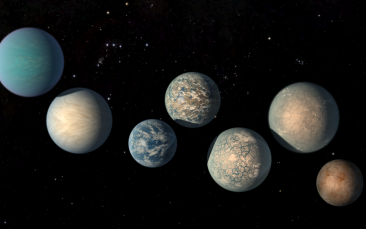
TRAPPIST-1: findings show exoplanets made of rock and water
In 2016, a team of researchers led by EU-funded astronomer Michaël Gillon at the University of Liège, Belgium, discovered three temperate Earth-sized planets orbiting TRAPPIST-1, an ultra-cool dwarf star just 40 light years from Earth. A few months…In 2016, a team of researchers led by EU-funded astronomer Michaël Gillon at the University of Liège, Belgium, discovered three temperate Earth-sized planets orbiting TRAPPIST-1, an…In 2016, a team of researchers led by EU-funded astronomer Michaël Gillon at the University of Liège, Belgium, discovered three temperate Earth-sized…In 2016, a team of researchers led by EU-funded astronomer Michaël Gillon at the University of Liège, Belgium, discovered three temperate Earth-sized planets orbiting…In 2016, a team of researchers led by EU-funded astronomer Michaël Gillon at the University of Liège, Belgium, discovered… -
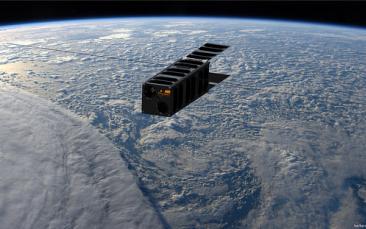
Tiny, but not afraid of the big
If you raise your eyes to the sky, you won't see it but you might sense it passing by. On 12 January just before sunrise in Europe, PicSat, a cube satellite as big as a shoebox and barely as heavy as a brick, will be launched from the Satish Dhawan…If you raise your eyes to the sky, you won't see it but you might sense it passing by. On 12 January just before sunrise in Europe, PicSat, a cube satellite as big as a shoebox and…If you raise your eyes to the sky, you won't see it but you might sense it passing by. On 12 January just before sunrise in Europe, PicSat, a cube…If you raise your eyes to the sky, you won't see it but you might sense it passing by. On 12 January just before sunrise in Europe, PicSat, a cube satellite as big as a…If you raise your eyes to the sky, you won't see it but you might sense it passing by. On 12 January just before sunrise in…
